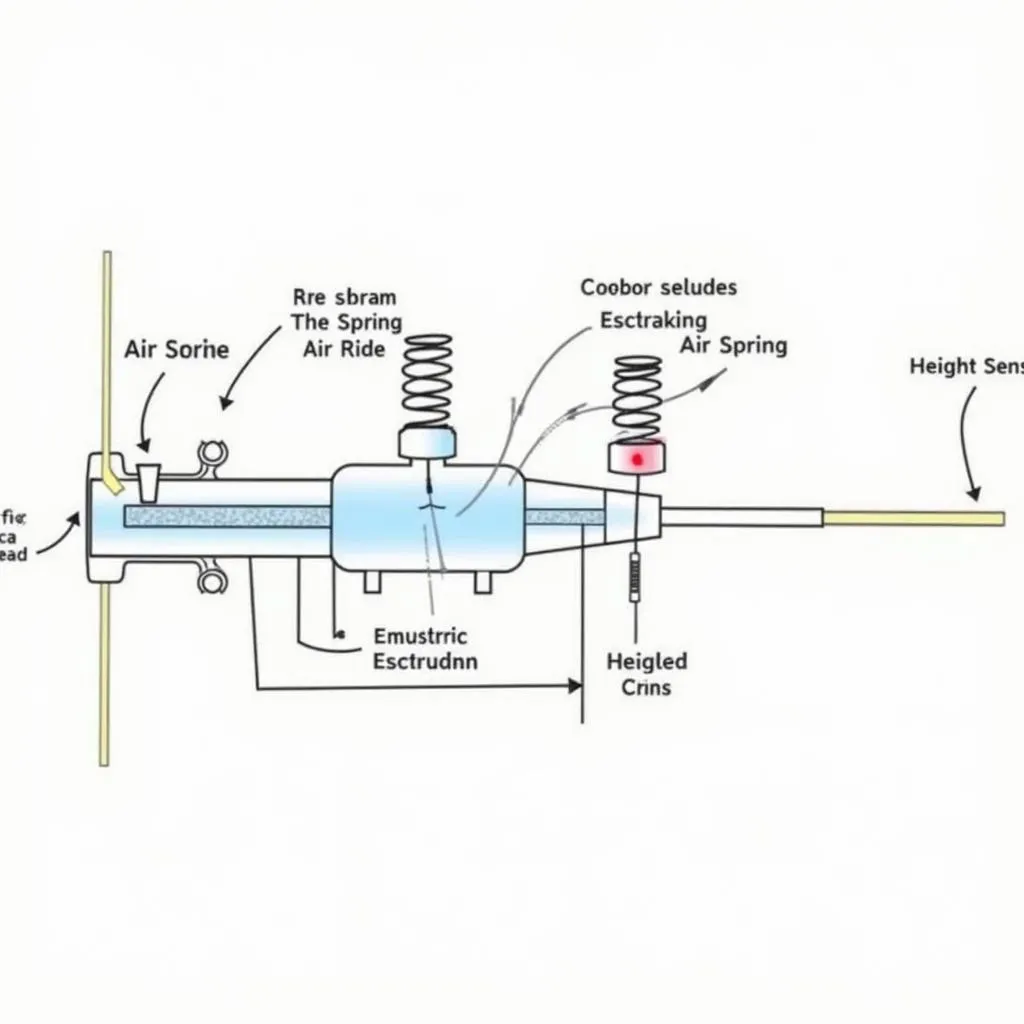Air Ride Systems for Cars: The Ultimate Guide to a Smooth Ride
You’re cruising down the Pacific Coast Highway, the California sun warming your face, the wind in your hair…but what’s this? No jarring bumps in your classic ’67 Mustang? That’s the magic of Air Ride Systems For Cars. Imagine a system that not only smooths out potholes like they were mere pebbles but also allows you to adjust your car’s height on the fly. Intrigued? Buckle up as we delve into the fascinating world of air ride systems.
What are Air Ride Systems?
From a mechanic’s perspective, air ride systems are a marvel of automotive engineering. Ditching the traditional steel spring and shock absorber setup, air ride utilizes pressurized air to cushion the ride. Imagine a balloon, but instead of air, it’s filled with compressed nitrogen, and instead of a party favor, it’s holding up your car. These “balloons,” technically known as air springs or airbags, are the heart of the system, working in conjunction with an onboard compressor, air lines, and an electronic control unit to deliver a driving experience that’s as smooth as silk.
The Ins and Outs of Air Ride Systems
So how does this magical system actually work? Let’s break it down:
Components of an Air Ride System:
- Air Springs: These rubber or polyurethane bladders replace your traditional springs, inflating and deflating to adjust your car’s height and absorb shocks.
- Compressor: The workhorse of the system, the compressor pumps air into the air springs, providing the necessary pressure for adjustments.
- Air Tank: A reservoir for compressed air, the air tank allows for quick height adjustments without straining the compressor.
- Control Unit: The brains of the operation, the electronic control unit manages the entire system, adjusting air pressure in the springs based on your inputs and driving conditions.
- Height Sensors: These sensors communicate with the control unit, providing real-time data on the car’s ride height to ensure precise adjustments.
How it All Works:
- Command Issued: You use the control system to raise or lower your car, or the system automatically adjusts based on pre-set parameters.
- Control Unit Takes Charge: The control unit receives the command and determines the required air pressure changes in each spring.
- Compressor Kicks In: The compressor pumps air into the air tank, building up the necessary pressure.
- Air Flows to the Springs: Air travels through the air lines from the tank to the air springs, inflating or deflating them as needed.
- Ride Height Adjusted: The car raises or lowers to the desired height, providing a smoother ride and enhanced handling.
 Air Ride System Components Diagram
Air Ride System Components Diagram
Benefits of Air Ride Systems
You might be thinking, “Okay, this sounds cool, but is it really worth it?” Well, air ride systems offer a range of benefits that go beyond just a comfortable ride:
1. Unmatched Comfort:
Say goodbye to backaches from bumpy roads! Air ride systems absorb shocks and vibrations much more effectively than traditional springs, providing a smoother, more comfortable ride, especially on long drives or rough terrains.
2. Adjustable Ride Height:
This is where the “cool” factor really kicks in. Want to slam your car for a sporty look? Need extra ground clearance to navigate those pesky speed bumps? Air ride allows you to adjust your car’s height on the fly, giving you the best of both worlds.
3. Enhanced Handling:
Contrary to what some might think, air ride can actually improve handling. By adjusting the air pressure in each spring independently, the system can stiffen or soften the suspension, reducing body roll in corners and enhancing stability.
4. Load Leveling:
Carrying a heavy load can make your car sag, affecting handling and headlight aim. Air ride systems automatically adjust to the weight, keeping your car level and ensuring optimal performance regardless of the load.
Air Ride vs Traditional Suspension: A Head-to-Head
While air ride systems offer a tempting array of benefits, it’s crucial to weigh them against traditional suspension systems before making a decision:
| Feature | Air Ride Suspension | Traditional Suspension |
|---|---|---|
| Ride Comfort | Superior | Good |
| Adjustability | Highly adjustable | Limited to no adjustability |
| Cost | More expensive | Less expensive |
| Maintenance | Requires specialized care | Easier and less expensive to maintain |
| Durability | Can be more prone to leaks and component failure | Generally more durable |
 Sports Car with Adjustable Air Ride System
Sports Car with Adjustable Air Ride System
Is Air Ride Right for You?
Ultimately, the decision of whether to go for air ride depends on your individual needs and priorities. If you’re seeking unmatched comfort, adjustable ride height, and enhanced handling, and you’re willing to invest a bit more upfront and in maintenance, then air ride might be your perfect match.
Here are some questions to ask yourself:
- How important is ride comfort to you?
- Do you frequently drive on rough roads or uneven terrain?
- Are you interested in customizing your car’s stance and look?
- Are you comfortable with the higher initial cost and potential maintenance requirements of air ride systems?
Exploring the World of Automotive Enhancement
If you’re intrigued by the possibilities of air ride and want to delve deeper into the world of automotive enhancement, be sure to check out these related articles:
Get Expert Assistance
Ready to upgrade your ride with an air ride system? Our team of automotive experts is here to help! Contact us on WhatsApp at +84767531508 for expert advice, installation support, and 24/7 assistance. Let us help you achieve the smooth, stylish, and personalized ride of your dreams.
